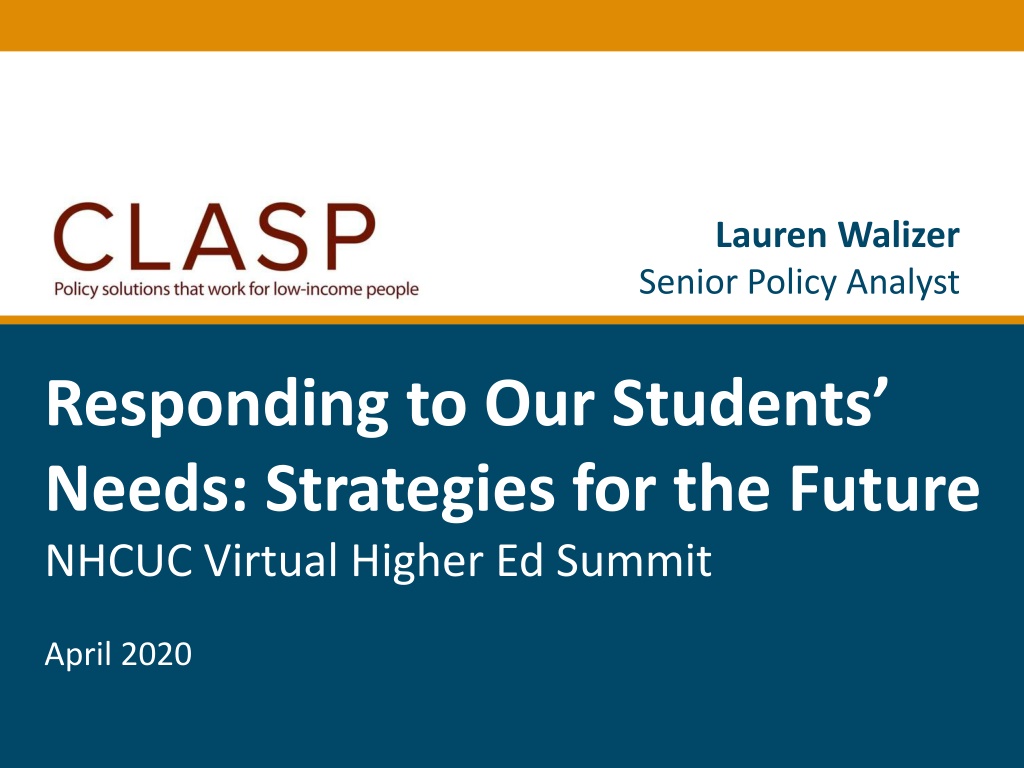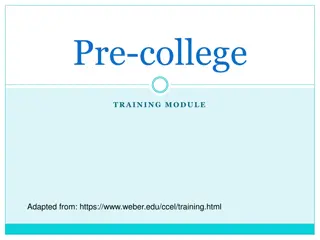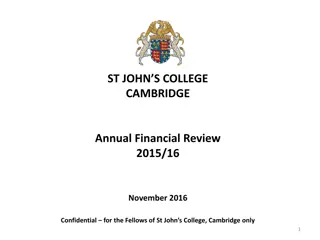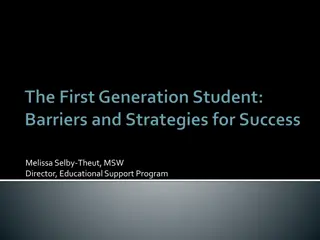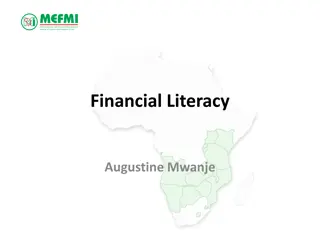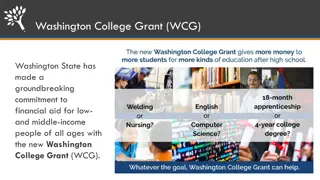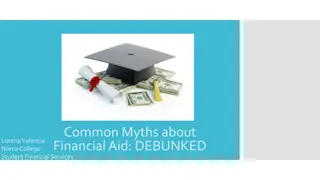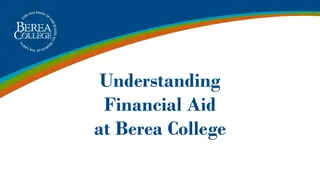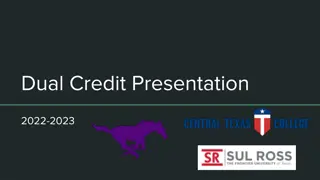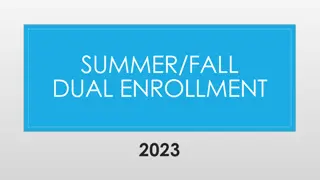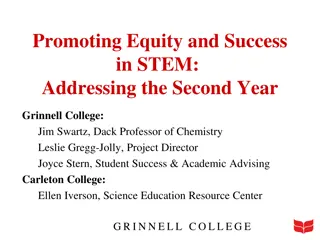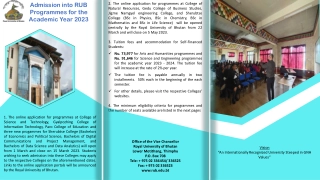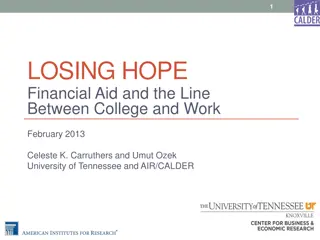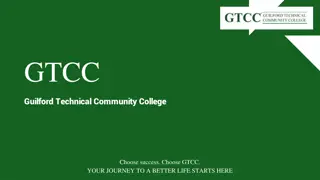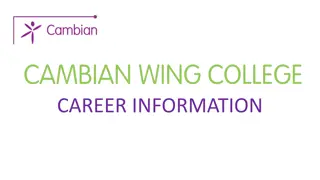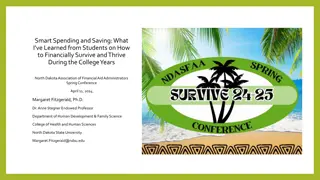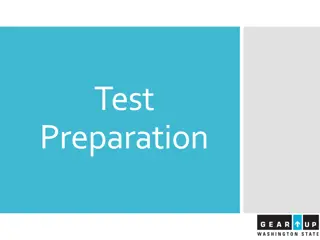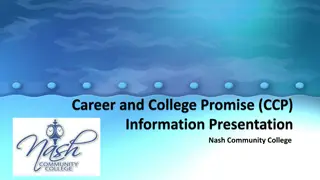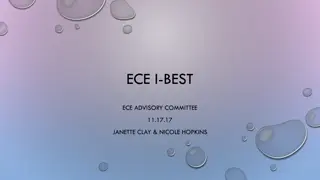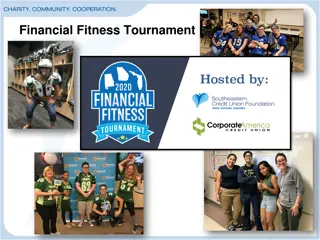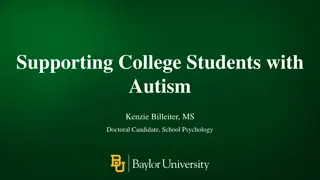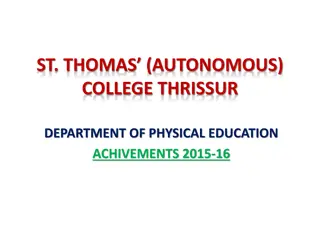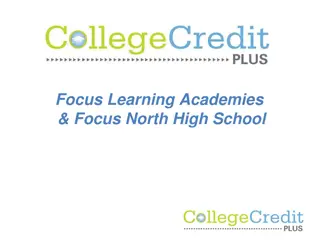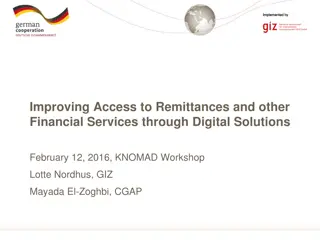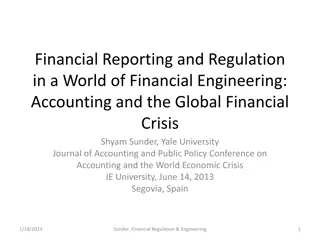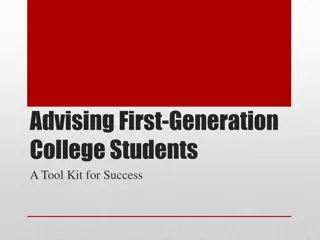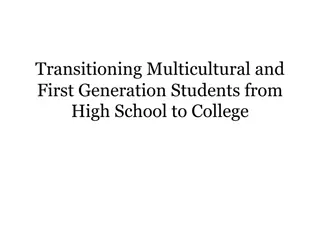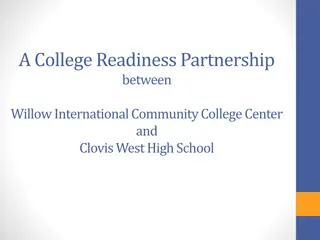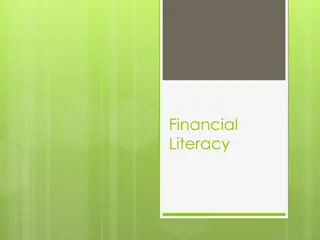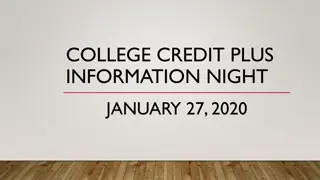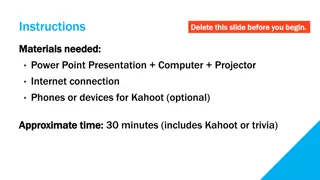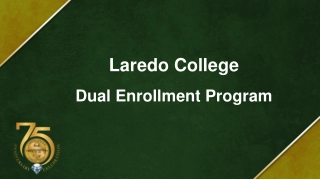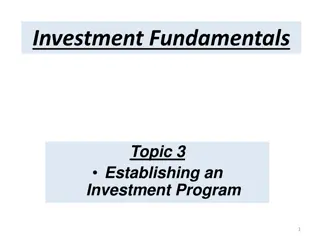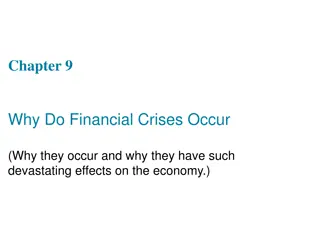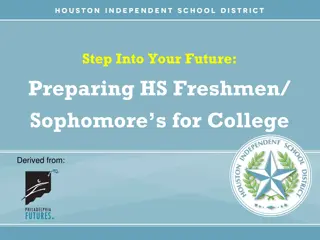Strategies for Addressing Financial Challenges Faced by College Students
Advocating for policy solutions to reduce poverty, promote economic security, and advance racial equity among college students. Explore the impact of financial need on students, such as food and housing insecurity, enrollment intensity reduction, and academic persistence challenges. Hear student voices and learn about trends in student aid and tuition charges over time.
Download Presentation

Please find below an Image/Link to download the presentation.
The content on the website is provided AS IS for your information and personal use only. It may not be sold, licensed, or shared on other websites without obtaining consent from the author. Download presentation by click this link. If you encounter any issues during the download, it is possible that the publisher has removed the file from their server.
E N D
Presentation Transcript
Lauren Walizer Senior Policy Analyst Responding to Our Students Title of Presentation Conference or Event Title Needs: Strategies for the Future NHCUC Virtual Higher Ed Summit Month Year April 2020
About CLASP The Center for Law and Social Policy (CLASP) advocates for policy solutions that reduce poverty, promote economic security, and advance racial equity. Lauren Walizer CLASP | clasp.org 2 2
Student Voice Student: I called my mom, and I was like, You have to give me money, I m broke, I need $50. She gave me like $30, because she s broke too, but it all counts. Traditional aged full-time private college student living off-campus and working multiple part-time jobs Source: Studying on Empty: A Qualitative Study of Low food Security Among College Students research by the Trellis Company https://www.trelliscompany.org/wp- content/uploads/2019/09/Studying-on-Empty.pdf CLASP | clasp.org 3 3
Granite State Students Only about half are dependent on their parents; 27% are independent and on their own, & 1 in 4 are caring for dependents. 63% are working in a work-study or other job. More than 40% of working students are working at least 35 hours a week 12% of students received a public benefit. 1/3 have an annual income of $30,000 or less. CLASP | clasp.org 4 4
Trends Over Time: Student Aid & NH Tuition Charges Source: College Board $18,000 $16,000 $14,000 $12,000 $10,000 $8,000 $6,000 $4,000 $2,000 $- 2004-05 2005-06 2006-07 2007-08 2008-09 2009-10 2010-11 2011-12 2012-13 2013-14 2014-15 2015-16 2016-17 2017-18 2018-19 Community College Tuition and Fees Public 4-Year College Tuition and Fees Average Grant Aid Average Other Non-Loan Aid CLASP | clasp.org 5 5
Financial Need Can Cause Students to: Have higher risk of food/housing insecurity or health problems Reduce their enrollment intensity Have less time for studying Reduce sleep limiting a students chance of persisting and completing CLASP | clasp.org 6 6
Student Voice If I go to class and I don t spend those miles on my car that wastes my gas, then I won t have to put so much in my tank a week, then I can put more money towards food so I can get more food. So I didn t go to classes a lot because that was my thought process. Traditional aged full-time public college student working full-time and living off campus with family Source: Studying on Empty CLASP | clasp.org 7 7
Comprehensive Student Aid Federal Opportunities for Alignment Federal Explicitly for Ed & Training Institutional Private State/Local Student's personal resources Training Programs (e.g., TAACCCT, HPOG) Scholarships State grants TANF Emergency aid State- funded work-study SNAP Employers or other businesses Title IV (includes Pell Grants, Work-Study) Education Tax Credits WIOA (Individual Training Accounts, WDB funds) State EITC, Child Tax Credit Foundations Medicaid Tribal resources SNAP Employment & Training Child Care Subsidies Public Housing Assistance Post-9/11 GI Bill CLASP | clasp.org 8 8
Student Voice I lived off my tip money for meals at work. And if I didn t get enough [tips] that day, I just didn t have anything [to eat]. Full-time, public college student Source: Studying on Empty CLASP | clasp.org 9 9
(Student) Hunger in NH UNH study: Looked at food insecurity over 1 year; 25% of students had experienced it in that time. 3.9% reported eating smaller or skipping meals because they lacked money for food. 11.6% were hungry but did not eat because there wasn t enough money for food. As of October 2019, about 1 in every 4 NH K-12 students were eligible for free or reduced price student lunch. The NH Food Bank has seen a 5.5% increase in demand. At a recent event, they fed almost 600 people but had to turn more than 230 households away. CLASP | clasp.org 10 10
National Reviews of Student Hunger #RealCollege 2020 by the Hope Center. In the 30 days prior to the survey: 42% of community college & 33% of 4-year college students experienced food insecurity Only 38% of community college & 49% of 4-year college students were both food & housing secure. Government Accountability Office report, GAO- 19-95 Includes a literature review of food insecurity studies, examples from colleges, and recommendations for the Food & Nutrition Service to improve communication. CLASP | clasp.org 11 11
Most Students with Low Incomes Dont get SNAP CLASP | clasp.org 12
Student Voice I ll buy cup noodles and drinks and snacks. I haven t really been eating meals per se sandwich items, cereal, stuff like that I tried to apply for EBT and SNAP, but they said [that] because I was a student, I [didn t] qualify. Full-time, first generation public college student Source: Studying on Empty CLASP | clasp.org 13 13
Supplemental Nutrition Assistance Program (SNAP) Students attending more than half time are eligible if they meet income, asset criteria, and any apply: Caring for a child under age 6; Single parent caring for a child 6-11 and enrolled full-time, or unable to obtain child care; Working for pay at least 20 hours per week; Receiving any work-study funds; Receiving TANF benefits; Unable to work because of a disability; OR Enrolled in certain programs aimed at employment (e.g., WIOA, TAA, SNAP E&T or other state or locally-funded training program). CLASP | clasp.org 14 14
SNAP can help! SNAP can be used to buy food at authorized retailers. Generally, it can t be used to buy prepared foods or to pay for college cafeteria meal plans. A household of 1 can receive up to $194/month For a household of 3, that maximum is $509/month SNAP produces value: for every $1 the federal government invests in the program $1.50 of economic activity is generated CLASP | clasp.org 15
How SNAP Works in States States have some flexibility to define how SNAP operates in their state, including re: the student rules. E.g., the state can define what enrolled in a program aimed at employment means Many programs in community colleges could reasonably count under this heading: Perkins Act programs Career pathway programs High-demand majors CLASP | clasp.org 16 16
Student Voice School is nice, though. They have [free] ramen in the student lines. And so, one day I did not have any food. And I d left my debit card at home again. .. So, I was able to have a thing of ramen. That was nice. They provide snacks there pretty commonly. I d say, once a week, they probably bring a cart around while I m there. And I get to take a little snack. Traditional aged full-time public college student Source: Studying on Empty CLASP | clasp.org 17 17
College Interventions (strategies more effective pre-COVID-19) Put free snacks (e.g., fruit, granola bars, ramen) in high-trafficked areas Keep dining halls open over breaks Allow students to share meal points Create a food pantry Offer events with free food and notify students when leftover food is available Bring human service agency/community partners onto campus to help connect students to services CLASP | clasp.org 18 18
College Interventions: Strategies for the Foreseeable Future Keys: Multiple solutions will be necessary and the same solution won t fit every campus; all work will help normalize these issues and people s response to them. Quantify the problem What types of students are struggling? What are they struggling with, specifically? Leadership buy-in CLASP | clasp.org 19 19
The Power of Data: Examples from CA Colleges Evergreen Valley 1,711 unique visits & 4,000 total visits to the pantry each year. The patrons: 65% come weekly 28% are age 40+ (vs 10% of all students) 50% are Asian (vs 39% of all students) 30% are Latinx (vs 41% of all students) 83% passed their courses (vs 72% of all students) The pantry is in the college strategic plan Involvement by: faculty/staff, community partners, & special academic programs/students San Jose State University 2,897 unique visits & 11,000 total visits to the pantry each year. The patrons: 70% go to a single zone of the pantry (e.g., produce, toiletries, etc) 19% of users are international students (vs 12% of all students) 80% of their international student patrons are from India Found that the term food assistance" works for domestic students, but not as much for international students. CLASP | clasp.org 20 20
College Interventions: Strategies for the Foreseeable Future Process changes: Centralize student services Integrate benefits into existing college processes Engage a broad-based team to embed activities Develop plan to engage students How to reach them? What information will you share? Find student groups/individual students and/or community resources to help Help with application and follow up activities Help with other expenses to relieve budgetary pressure so they have $ for food e.g., paying for electronic book licenses CLASP | clasp.org 21 21
Oregon State Univ https://tinyurl.com/ychjhrje Mercy College https://tinyurl.com/ya2qnl92 Law Project of the Chicago Coalition for the Homeless https://tinyurl.com/yanqfoha Ohio University https://tinyurl.com/y7usre8b CLASP | clasp.org 22 22
Student Voice I finished all my financial aid money that I had gotten for the spring, so now it s really just what I m making from work, and since I m working part time, it s pretty tight. I don t spend money outside of anything that I absolutely need to. Interviewer: What would you say are the most important or necessary things that you spend money on? Rent and utilities. I need my apartment of course, and internet to do my homework, and electricity to have the internet. Full-time public college student working part- time and living off-campus Source: Studying on Empty CLASP | clasp.org 23 23
Other Opportunities/Federal Action Funding provided by the CARES Act Re: aid to students: how are you prioritizing students who have a risk factor for food insecurity or may be experiencing poverty? Re: aid to institutions: how are you using your funding to build structures to support these students better (now and) in the future? Strengthen the SNAP program in future stimulus bills CLASP | clasp.org 24 24
Resources GAO report https://www.gao.gov/products/GAO-19-95 Trellis Studying on Empty report https://www.trelliscompany.org/wp- content/uploads/2019/09/Studying-on-Empty.pdf Hope Center s #RealCollege 2020 report https://hope4college.com/wp- content/uploads/2020/02/2019_RealCollege_Survey_Re port.pdf More stories of food and housing insecurity, from the Chronicle of Higher Education https://www.chronicle.com/interactives/insecurity FAFSA or survey data from your campus CLASP | clasp.org 25 25
Student Voice I know I am not less than other people because I don t have as much. But it s hard to be hungry and motivated. Nassau Community College student Source: https://www.nytimes.com/2019/05/02/nyregion/hunger-college-food- insecurity.html CLASP | clasp.org 26 26
Thank You Lauren Walizer lwalizer@clasp.org @laurenwalizer www.clasp.org/lauren CLASP | clasp.org 27 27
